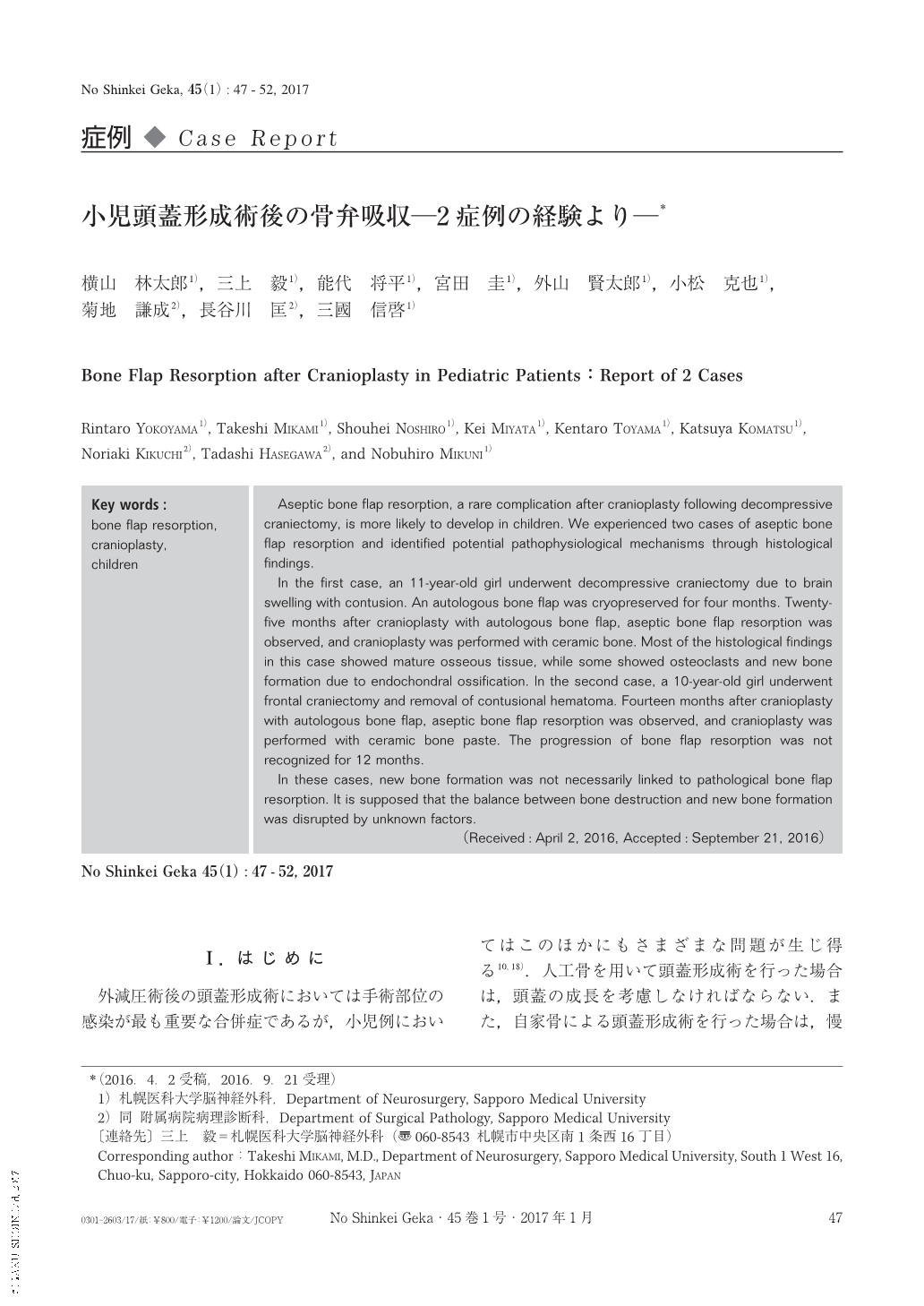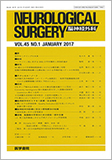Japanese
English
- 有料閲覧
- Abstract 文献概要
- 1ページ目 Look Inside
- 参考文献 Reference
Ⅰ.はじめに
外減圧術後の頭蓋形成術においては手術部位の感染が最も重要な合併症であるが,小児例においてはこのほかにもさまざまな問題が生じ得る10,18).人工骨を用いて頭蓋形成術を行った場合は,頭蓋の成長を考慮しなければならない.また,自家骨による頭蓋形成術を行った場合は,慢性期の仮骨形成や骨弁吸収を考慮しなければならない.小児の外減圧術後の頭蓋形成術における骨弁吸収は,39〜81.8%の割合で生じるとの報告もあり2,10,14),看過できない合併症である.しかしながら,小児重症頭部外傷の頻度そのものが低いため,一般的な認識は決して高くない.頭蓋形成術後の骨弁吸収の危険因子としては,これまで,冷凍保存,6週以降の手術,骨欠損部の大きさ,2.5歳以下,骨折下脳挫傷,骨弁の粉砕,外傷後続発性水頭症,Glasgow Outcome Scaleなどが報告されている2,3,12).しかしながら,これまでの報告には病理学的所見や考察がなく,病態については不明な点も多い.今回われわれは,当院で治療した頭部外傷後の頭蓋骨欠損に対して,自家骨弁による頭蓋形成術を行った後に骨弁吸収を来した2例の治療を行う機会を得た.これらをもとに,その病態について若干の文献的考察を加えて報告する.
Aseptic bone flap resorption, a rare complication after cranioplasty following decompressive craniectomy, is more likely to develop in children. We experienced two cases of aseptic bone flap resorption and identified potential pathophysiological mechanisms through histological findings.
In the first case, an 11-year-old girl underwent decompressive craniectomy due to brain swelling with contusion. An autologous bone flap was cryopreserved for four months. Twenty-five months after cranioplasty with autologous bone flap, aseptic bone flap resorption was observed, and cranioplasty was performed with ceramic bone. Most of the histological findings in this case showed mature osseous tissue, while some showed osteoclasts and new bone formation due to endochondral ossification. In the second case, a 10-year-old girl underwent frontal craniectomy and removal of contusional hematoma. Fourteen months after cranioplasty with autologous bone flap, aseptic bone flap resorption was observed, and cranioplasty was performed with ceramic bone paste. The progression of bone flap resorption was not recognized for 12 months.
In these cases, new bone formation was not necessarily linked to pathological bone flap resorption. It is supposed that the balance between bone destruction and new bone formation was disrupted by unknown factors.

Copyright © 2017, Igaku-Shoin Ltd. All rights reserved.


